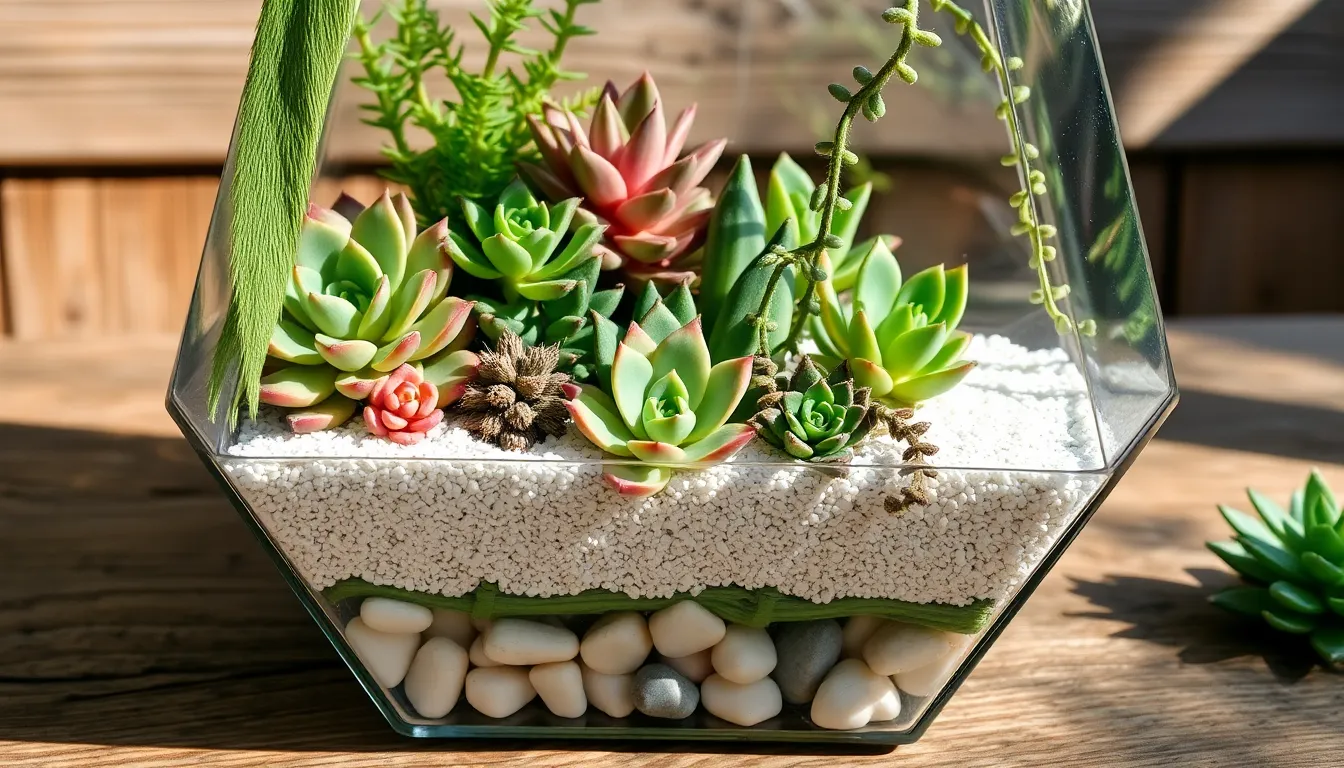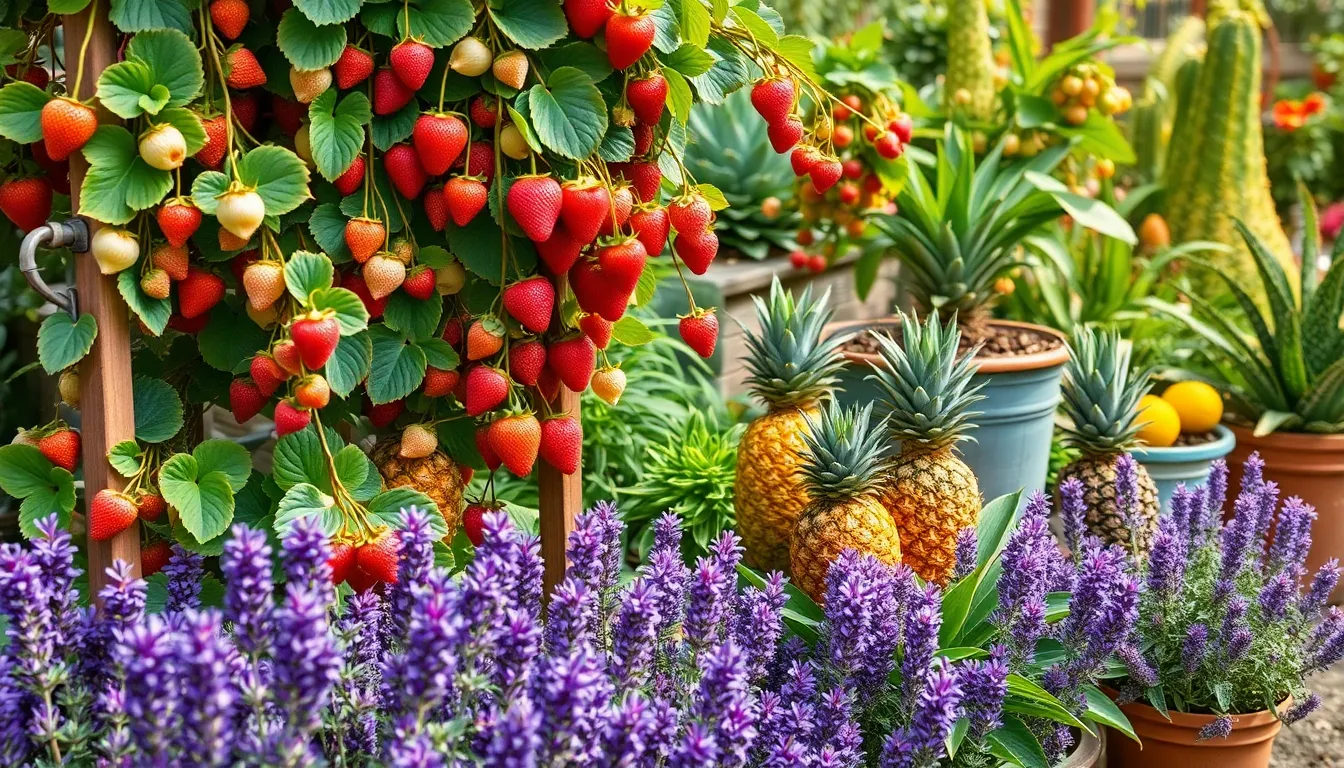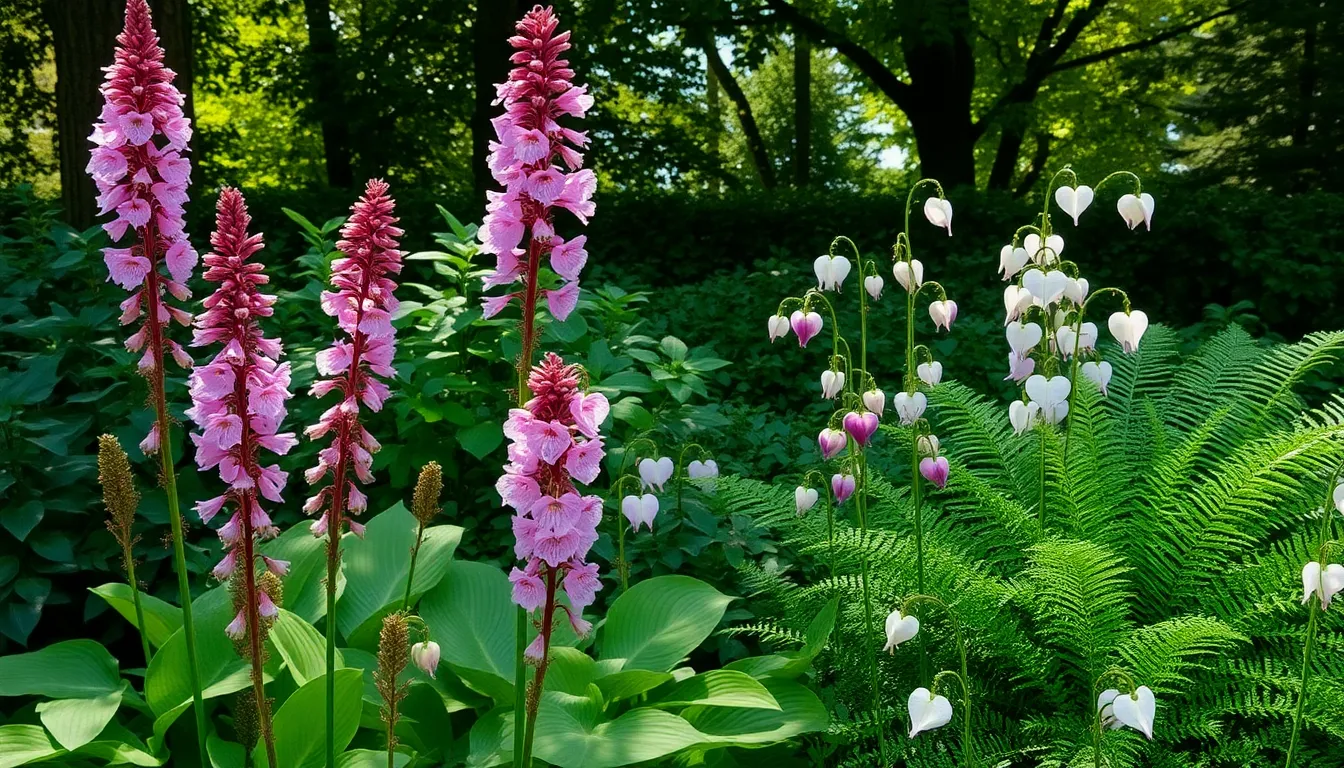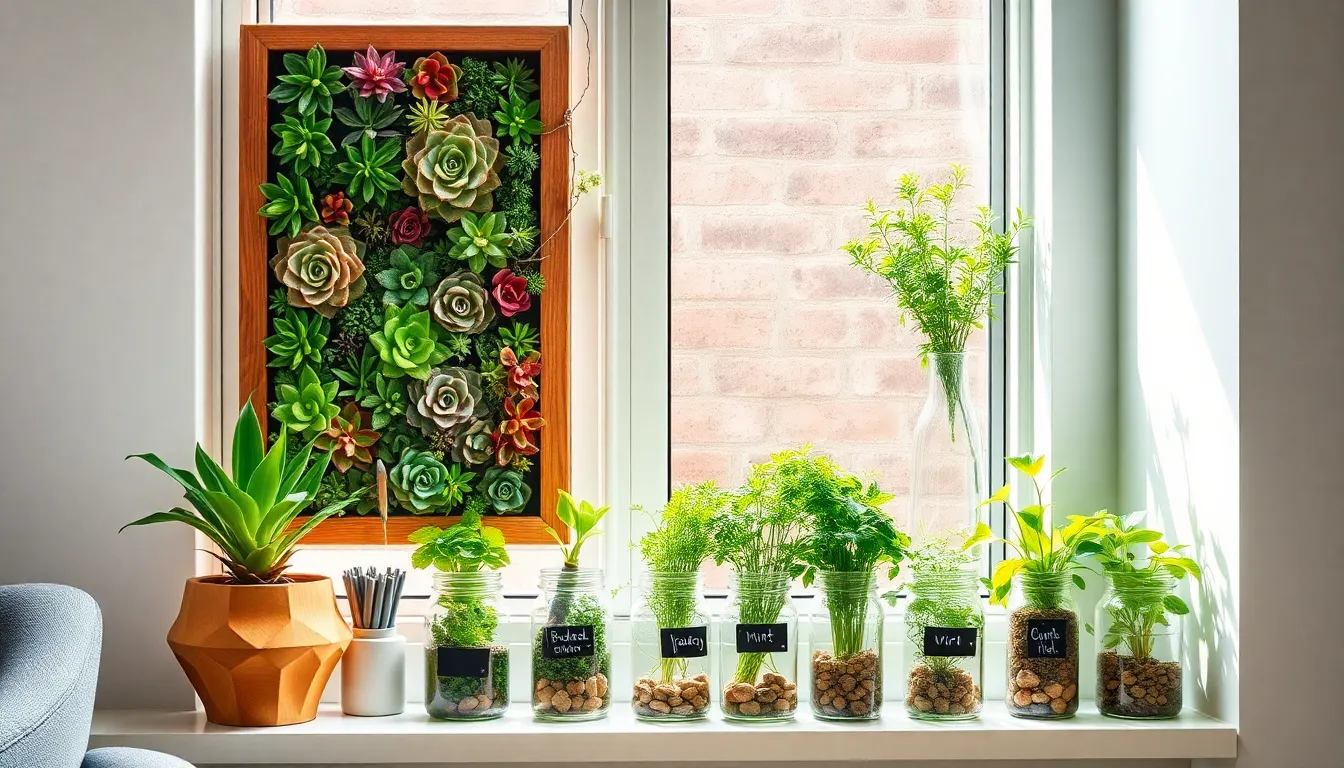Imagine a slice of desert beauty nestled right in your living room, a tiny world of resilience and charm contained within glass walls. Succulent terrariums offer just that—a low-maintenance, visually striking way to bring a piece of the outdoors inside, perfect for both seasoned gardeners and those just beginning their green-thumb journey. These miniature ecosystems not only add a touch of personal style to any space but also provide a unique opportunity to explore the art of plant care on a manageable scale.
Whether you’re a novice eager to cultivate your first indoor garden or a veteran gardener looking to experiment with new ideas, creating a succulent terrarium is a rewarding venture. You’ll discover how to select the best containers and succulents, master the layering of soil and other materials, and maintain an environment where your plants can thrive. Join us as we delve into the essentials of crafting these enchanting displays, offering tips and insights that cater to every level of expertise.
Select a Suitable Container
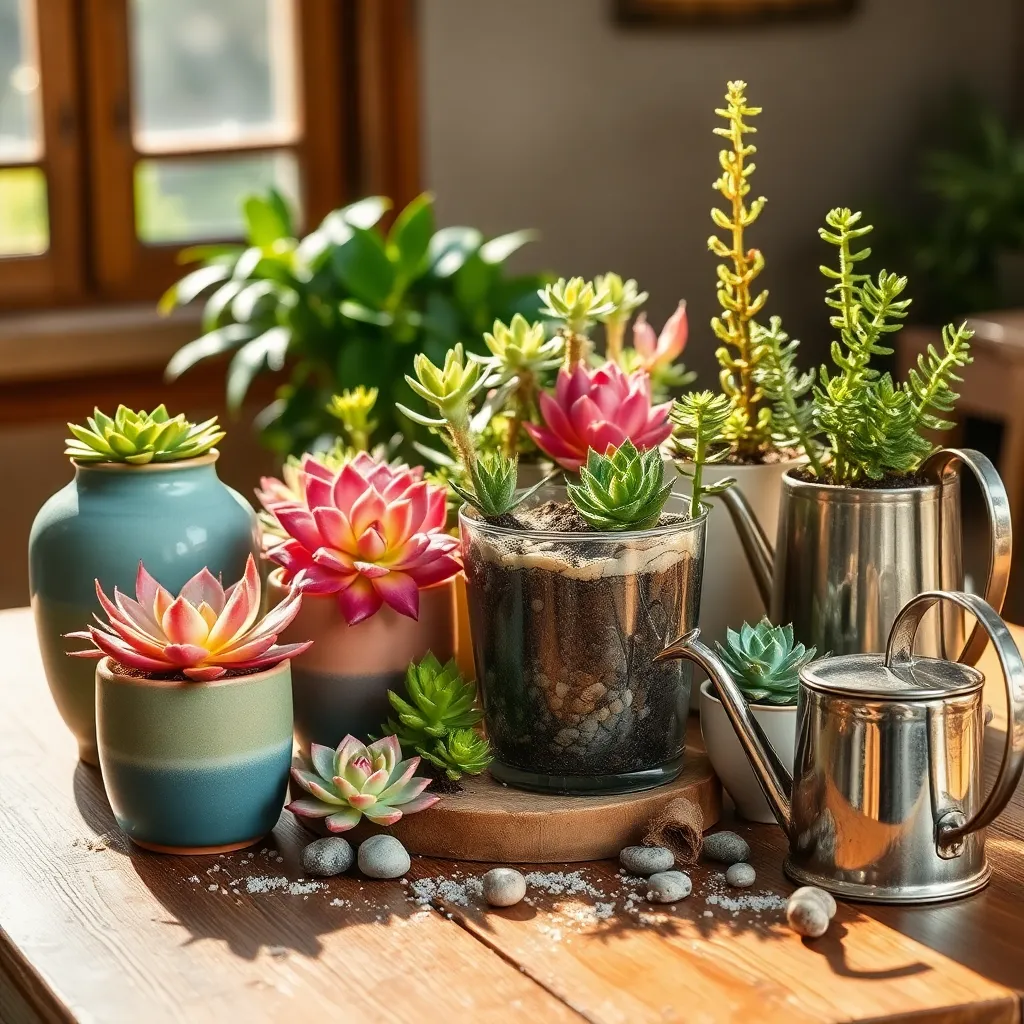
Choosing the right container for your succulent terrarium is crucial for the plants’ health and aesthetic appeal. Begin by selecting a container with a wide opening to allow for easy access and airflow, which succulents need to thrive.
Consider using a glass container, as it allows light to reach the plants while retaining moisture, essential for these drought-tolerant species. Ensure your container has enough depth to accommodate the roots and a layer of drainage material, such as pebbles or activated charcoal at the bottom.
While drainage holes are ideal, they aren’t necessary if you use a shallow layer of gravel to prevent water from pooling. For those looking to create a visually striking arrangement, consider containers with unique shapes or vintage glassware, but remember to adjust your watering accordingly to prevent root rot.
Advanced gardeners might experiment with different container materials, like ceramic or metal, to suit specific design themes, keeping in mind that these can influence the terrarium’s microclimate. Regardless of your choice, maintaining a balance between aesthetics and functionality will ensure your terrarium is both beautiful and sustainable.
Layer Pebbles for Drainage
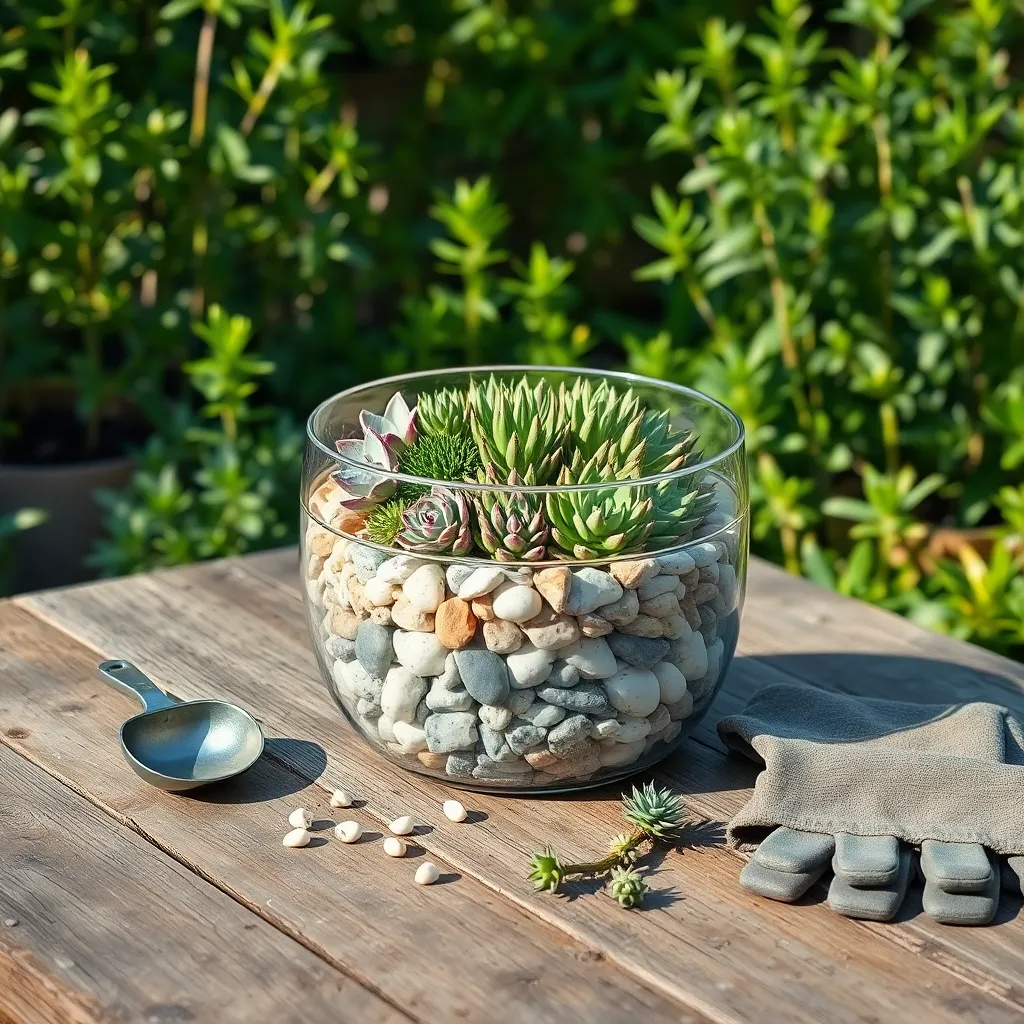
To kickstart your succulent terrarium, the first step is to add a layer of pebbles at the bottom of your container. This layer serves as a crucial component for drainage, ensuring that excess water does not linger around your plant roots, which can lead to rot.
Begin by choosing small pebbles or gravel, as they provide the best drainage support in confined spaces. Aim for a layer that is about one to two inches thick, depending on the size of your container, to effectively allow water to flow through.
Besides preventing water accumulation, these pebbles also create a visually appealing base for your terrarium. For those who love experimenting, consider mixing in a few colored pebbles to add an artistic touch to your indoor garden.
It’s important to remember that while a pebble layer helps with drainage, it is not a substitute for proper watering practices. Succulents require infrequent watering, so allow the soil to dry out completely between waterings to mimic their natural arid environment.
Add Succulent-Friendly Soil
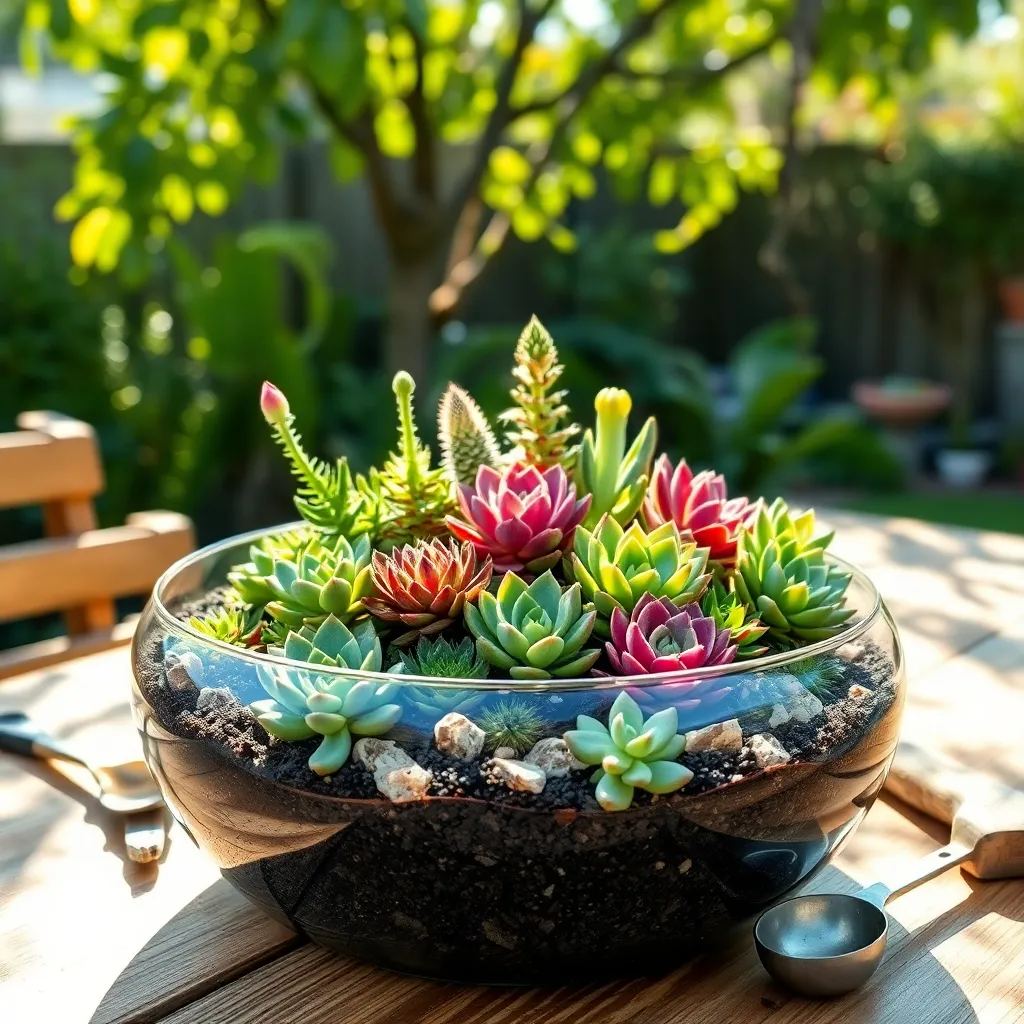
To ensure your succulent terrarium thrives, selecting the right soil is crucial. Succulents require a well-draining soil mix that prevents water from pooling around their roots, which can lead to rot.
A cactus or succulent potting mix is ideal, as it typically contains a blend of sand, perlite, and potting soil. This mix allows for efficient drainage, mimicking the arid environments these plants naturally thrive in.
For those who like a hands-on approach, creating your own mix can be both rewarding and beneficial. Combine three parts potting soil, two parts sand, and one part perlite for a balanced, well-draining blend.
Experienced gardeners might add a bit of crushed granite or pumice to enhance aeration even further. These additions can improve root health and reduce the risk of overwatering by increasing airflow around the roots.
When placing the soil in your terrarium, gently firm it down to remove air pockets while maintaining its light, airy texture. A light misting with water can help settle stubborn dust and particles, prepping the soil for planting.
Arrange and Plant Succulents
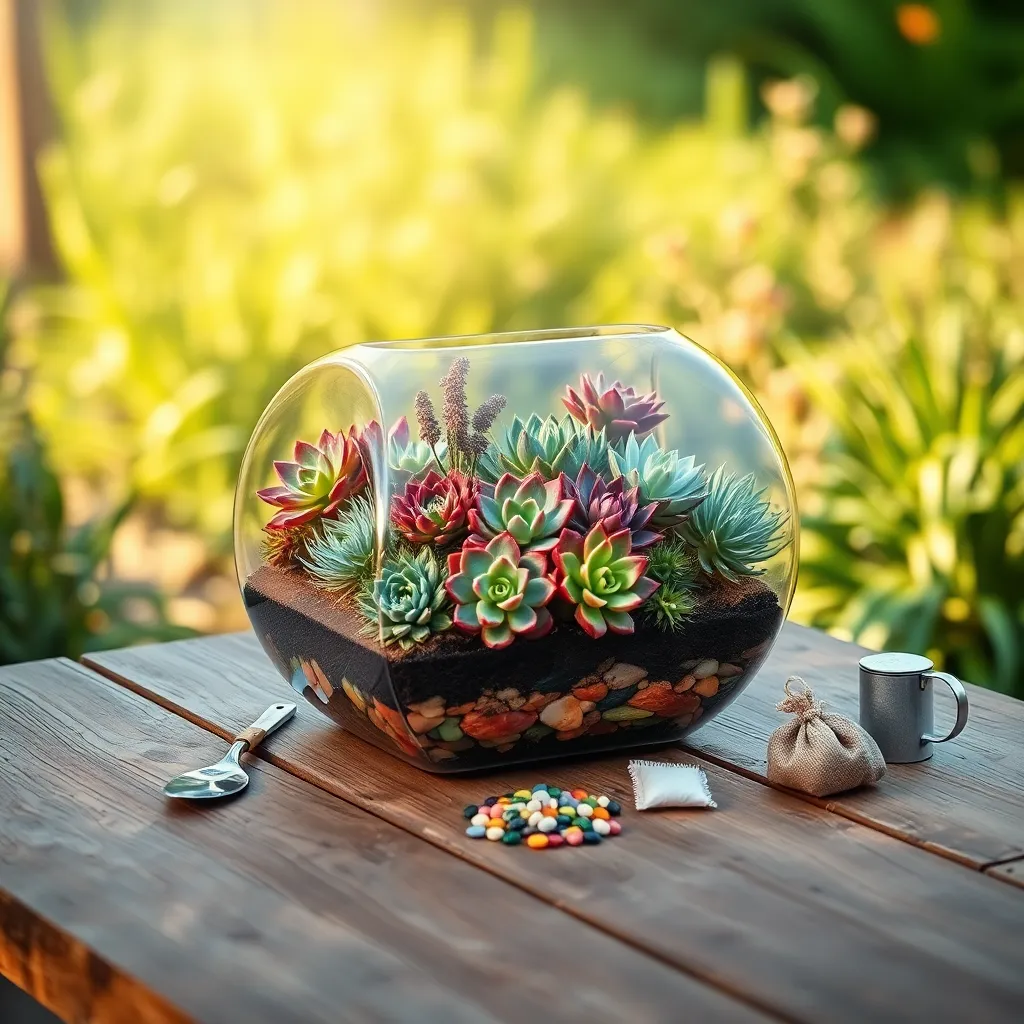
When arranging your succulents, consider their size and growth habits to ensure they have enough space to thrive. Start by placing the largest succulent in the center or slightly off-center for a balanced look.
Next, surround the larger plant with smaller succulents, creating a layered effect that adds depth and variety. This method not only enhances visual appeal but also allows for easier maintenance and watering.
Ensure good air circulation by leaving a small gap between each plant, which helps prevent rot and disease. Proper spacing also promotes healthy growth by allowing each plant ample access to light and nutrients.
As you plant, gently remove any excess soil from the roots and place each succulent into the pre-made holes in the soil. Firmly press the soil around the base of each plant to secure it in place, ensuring stability.
Once all your succulents are positioned, lightly water the terrarium using a spray bottle to settle the soil around the roots. Remember, succulents prefer dry conditions, so allow the soil to dry out completely between waterings.
For a finishing touch, add decorative elements like pebbles or moss to cover the soil surface, which helps retain moisture and enhances the terrarium’s aesthetic. With these steps, your succulent terrarium will be both a thriving ecosystem and a beautiful centerpiece.
Decorate with Moss and Stones
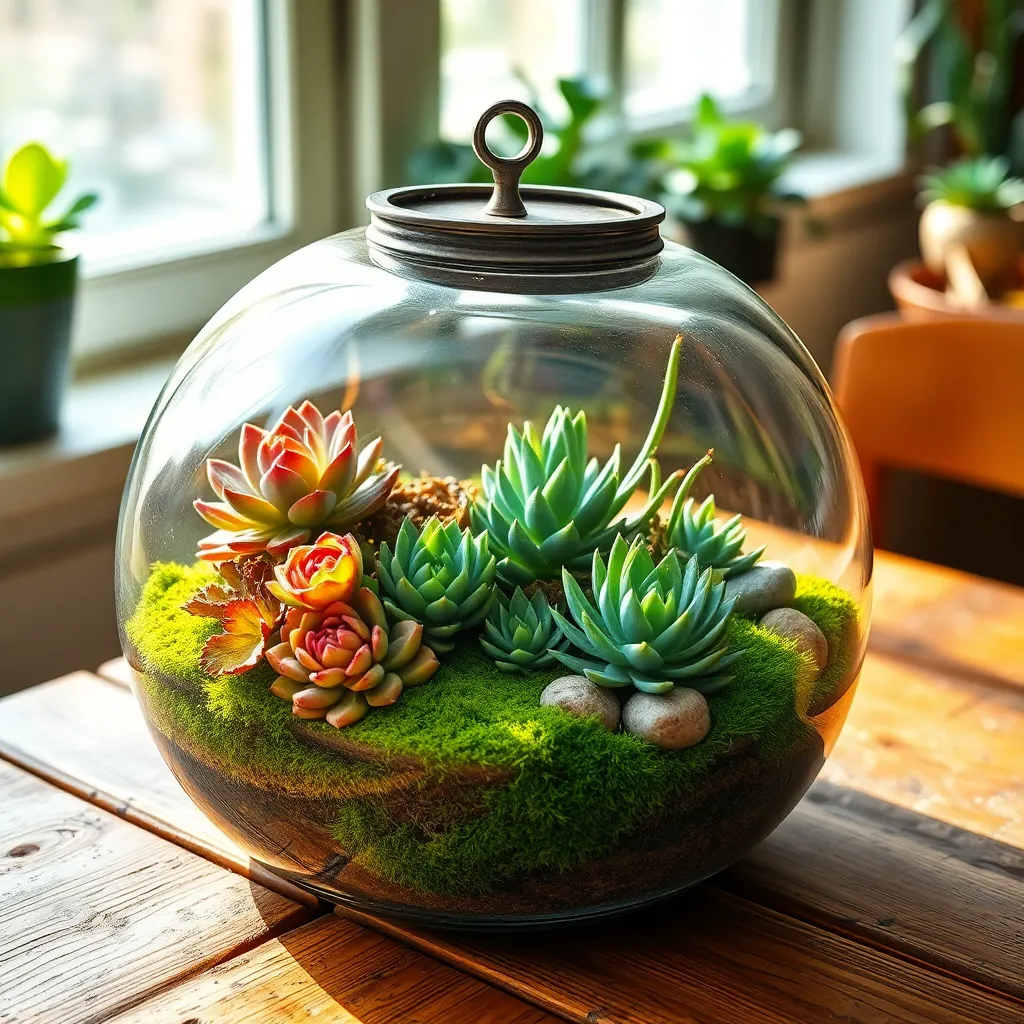
Enhancing your succulent terrarium with moss and stones can create a visually appealing and natural look. Choose small, decorative stones to add texture and dimension, placing them strategically around your succulents.
Moss not only adds a lush green contrast but also helps retain moisture in the terrarium. Use preserved moss, which requires less maintenance, and gently press it into the soil around the succulents.
For a more personalized touch, arrange the stones in patterns or clusters to mimic a natural landscape. Ensure they are stable enough to support the succulents’ growth without obstructing sunlight.
Experiment with different types of stones, like river rocks or polished pebbles, to find the best fit for your terrarium’s aesthetic. Remember to leave enough space for air circulation to prevent mold growth.
Conclusion: Growing Success with These Plants
In crafting your succulent terrarium, you’ve quietly nurtured five vital relationship concepts: patience, communication, teamwork, adaptability, and appreciation. Patience, as you gently place each plant, mirrors the necessary pace of letting relationships grow naturally. Communication is seen in how you interpret the needs of each succulent, just as understanding is key in human connections. The teamwork involved highlights the shared efforts required to create a thriving relationship environment. Adaptability shines through as you adjust to your plants’ evolving needs, much like the flexibility required in personal bonds. Lastly, appreciation is found in the beauty of your creation, reminding you to cherish the unique aspects of your relationships.
Now, take immediate action: pause and share a heartfelt conversation with someone you care about, reflecting the lessons you’ve learned. Bookmark this article to revisit these insights whenever you need a gentle reminder of the essentials of nurturing relationships. By doing so, you’re investing in the longevity and health of your personal connections. As you look forward, know that with these skills, your relationships have every potential to flourish beautifully, just like your terrarium. Empowered with this knowledge, you are well on your way to cultivating deeper, more fulfilling bonds.

